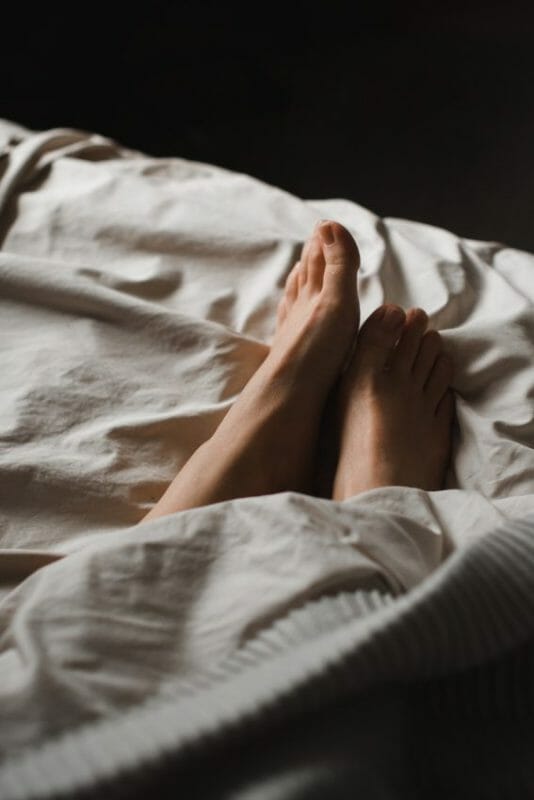Restless Leg Syndrome is a disorder characterized by an irresistible urge to move one’s legs. This urge is often accompanied by a sense of discomfort or even pain. The symptoms of Restless Leg Syndrome are typically worse at night, making it difficult for sufferers to get a good night’s sleep. The exact cause of the condition is unknown, but it is thought to be linked to problems with the nervous system.
RLS is also known as Willis-Ekbom disease, Ekbom’s syndrome, or simply Willis-Ekbom. The condition typically begins slowly and gradually worsens over time. RLS can occur at any age, but it is more common in middle-aged and older adults. Women are more likely than men to experience RLS.
Treatment typically involves lifestyle changes, such as exercising and taking iron supplements. In some cases, medication may also be prescribed. If you think you may have Restless Leg Syndrome, speak to your doctor El Paso Vein Doc, for a proper diagnosis.
What causes Restless Leg Syndrome?
RLS is also known as Willis-Ekbom disease. The cause of Restless Leg Syndrome is unknown, but there are some factors that may contribute to the condition. RLS is more likely to develop in people who have a family history of the condition and who experience their first symptoms before age 40.
Low levels of iron in the brain have been linked to Restless Legs Syndrome, according to new research. Iron is essential for the proper function of brain cells, and previous studies have shown that iron levels are often lower in people with RLS.
There are also some medications that can trigger RLS, including antipsychotics, antidepressants, and anti-nausea drugs. If you think you may have RLS, talk to your doctor about treatment options. There is no cure for RLS, but treatments can help relieve symptoms and improve sleep quality.
Common Signs and Symptoms
Symptoms typically occur when a person is at rest and can range from mild to severe. Some people with RLS only experience occasional symptoms, while others may experience them several times a day. In severe cases, symptoms can interfere with sleep and cause daytime fatigue. While there is no cure for RLS, treatment can help to manage the symptoms. There are a variety of treatment options available, including medication, lifestyle changes, and electrical stimulation therapy. If you are experiencing symptoms of RLS, talk to your doctor to discuss the best treatment option for you.
Sensations while resting
Restless Legs Syndrome (RLS) is a neurological disorder that causes unpleasant sensations in the legs and an irresistible urge to move them. The sensations typically begin after you’ve been lying down or sitting for an extended period and are most severe at night.
RLS can cause significant distress and interfere with sleep, leading to daytime fatigue. Restless Legs Syndrome is a chronic condition, but treatments are available to help relieve symptoms and improve quality of life.
Relief with movement
The symptoms of RLS typically occur when a person is at rest, such as when lying down or sitting in a chair. The sensation of RLS lessens with movement, which is why many people with the condition find relief by walking or stretching their legs. So, if you feel the urge to move, take a walk, do some stretching or jiggle your legs. In addition, warm baths and massages may help to ease the sensation of RLS.
Worsening symptoms at night
Restless Legs Syndrome, or RLS, is a condition that causes an irresistible urge to move the legs. RLS symptoms typically worsen in the evening and occur mainly at night, making it difficult to get a good night’s sleep. In some cases, RLS can also cause fatigue and insomnia. There is no cure for RLS, but there are treatments that can help to relieve the symptoms. If you think you may have RLS, talk to your doctor about potential treatment options.
Leg twitching at night
RLS symptoms are often worse at night and can make it difficult to fall asleep or stay asleep. In addition to leg movements, RLS may also cause periodic limb movement of sleep (PLMS), which causes the legs to twitch and kick while you sleep. Although there is no cure for RLS, symptoms can be managed with lifestyle changes and medications. If you think you may have RLS, talk to your doctor.
Daytime sleepiness
Restless legs syndrome (RLS) is a disorder that causes a strong urge to move your legs. This urge is usually accompanied by an uncomfortable feeling in your legs. You may also have trouble falling asleep or staying asleep because of these symptoms. As a result, you may feel very tired during the day.
RLS is more common in women than men and often begins during adulthood. However, it can affect children as well. There is no cure for RLS, but there are treatments that can help relieve symptoms. If you think you may have RLS, talk to your doctor.
